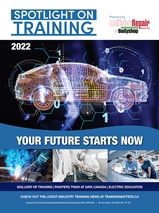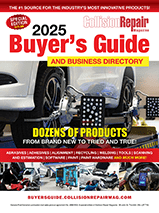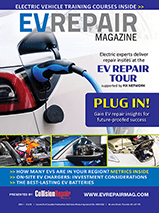At present, EEA is developing from the distributed type to domain centralization and cross-domain fusion. The trend for internal and external integration of domain controllers, especially the integration of two core domains, intelligent driving domain and cockpit domain, becomes clearer. Against this background, three main integration forms come out: driving-parking integration, cockpit-parking integration and cockpit-driving integration.
Driving-parking integration: Since wide adoption in 2023, driving-parking integration solutions have been mounted on nearly 70 vehicle models of more than 30 manufacturers. According to the statistics of the publisher, from January to November 2023 driving-parking integration solutions were installed in over 1.4 million vehicles in China, a like-on-like surge of 38.0%. The figure is expected to hit more than 3 million in 2025.
Cockpit-parking integration: In the stage of commercial exploration, high-compute chips such as Qualcomm 8155/8295, SiEngine Longying No.1 and SemiDrive X9SP have been the first to be used. On this basis, Bosch, Aptiv, Visteon, Desay SV, ECARX, Yuanfeng Technology and BICV, among others have launched cockpit-parking integration solutions, some of which have been designated by or mass-produced for OEMs for their models like Lynk & Co 08. During 2024-2025, cockpit-parking integration will find massive application in vehicles.
Cockpit-driving integration: The hardware foundation is basically in place. For example, NVIDIA Drive Thor and Qualcomm Snapdragon Ride Flex, with computing power up to 2000TOPS, enable the integration of intelligent driving and in-cabin algorithms on a single chip, and support isolation among multiple computing domains. Cockpit-driving integration has begun to be accelerated in the second half of 2023 and is expected to be mass-produced and applied in 2025.
Driving-parking integration means the original independent driving and parking controllers are integrated into a domain controller, lowering costs while supporting more and higher-level intelligent driving functions.
In recent two years, the booming driving-parking integration has attracted OEMs, Tier1 suppliers, intelligent driving companies, algorithm companies, software companies and chip companies to make layout. Two main reasons stand out: first, driven by cost, integrating driving and parking ECUs on the same domain controller can reduce a lot of hardware costs; second, as the demand for intelligence increases, driving-parking integration allows for computing resource sharing and deep sensor multiplexing, and improves intelligent driving experiences for users via unified OTA updates.
By computing power, driving-parking integration is roughly divided into three levels: low (5-10 TOPS), medium (10-100 TOPS), and high (100+ TOPS). In 2023, OEMs are in urgent need of cost reduction, so that Tier 1 suppliers of driving-parking integration have played the ‘ultimately cost-effective’ card to facilitate market segmentation.
There are two main ways: first, they expand to low computing power (5-10TOPS) by squeezing chip computing power and working hard on algorithms; second, vendors who originally aimed at the high-end market above 200TOPS no longer “stack up” but strengthen algorithms and software technologies to balance the performance and cost of high-level driving-parking integration.
In addition, Tier 1 suppliers, such as Hong Jing Drive, iMotion, Freetech, and NavInfo, are sparing no effort to promote the ‘extremely cost-effective’ products. Most of them make layout in the low-compute and low-to-mid-end markets to seize the dividend of large-scale application.
In February 2023, Freetech introduced a single-SOC low-compute driving-parking integration solution (based on TDA4M, 8TOPS, 5V5R configuration), with cost controlled within RMB3,000, including sensors, domain controllers, algorithms, etc.
By the end of 2023, Hong Jing Drive’s driving-parking integration solution (time-division multiplexing) based on a single J3 chip from Horizon Robotics has been production-ready. With the computing power of 5TOPS, self-developed parking perception, and planning and control algorithms, it can be connected to 5R5V12U (supporting 8MP front view) to enable functions such as automatic lane change and large vehicle avoidance. The total cost of the solution amounts to RMB3,000.
Chip vendors make a quick response to the urgent need for ‘cost reduction and efficiency improvement’.
To meet OEMs’ need for ‘lower costs and higher efficiency’, driving-parking integration chip vendors have begun to adjust their product lines and have developed a series of new products. Typical companies are NVIDIA, Horizon Robotics, Black Sesame Technologies and TI.
Despite a little lower computing power than Orin X, Orin N can compare with Orin-X in development tools and data links. In development, automakers can transplant algorithms to make Orin-N compatible with Orin X and other versions of Orin.
The mass production and installation of Orin-N caters to automakers who intend to reduce costs and improve efficiency. It is expected to be used in more models in the future. At present, Desay SV is developing an Orin-N-based driving-parking integration product on IPU02.
Quite a few companies deploy cockpit-parking integration, and ECARX is a pioneer in application.
In 2023, while driving-parking integration became popular, cockpit-parking integration has been quietly emerging.
In addition to parking functions, cockpit-parking integration also integrates cockpit functions, and uses cockpit GPU resources to provide rendering capabilities for AVM and APA, so as to reduce costs and improve efficiency. Currently Bosch, Aptiv, Visteon, ECARX, Desay SV, Yuanfeng Technology, and BICV among others have launched cockpit-parking integration solutions.
Cockpit-driving integration takes the fast road, and is expected to go into mass production in 2025.
Cockpit-driving integration means the cockpit and intelligent driving domains are integrated into a high-performance computing unit to support both intelligent driving and intelligent cockpit functions simultaneously. It is considered the future development direction.
So far, NVIDIA, Qualcomm and Black Sesame Technologies among others have launched high-compute chips to support computing across intelligent driving and intelligent cockpit domains.
Since the second half of 2023, the pace of development and application of cockpit-driving integration have quickened, and Baidu, ThunderX, Autolink World, Bosch and Aptiv have launched single-SoC cockpit-driving integration products or solutions. This will favor the rapid adoption of cockpit-driving integration, which is expected to be applied on a large scale after 2025.
At the core of the new vehicle computer unveiled by Bosch in January 2024 – called the cockpit & ADAS integration platform – is a single SoC, which processes a variety of functions from the two domains of infotainment and driver assistance simultaneously. This includes, for example, automated parking and lane detection, paired with smart, personalized navigation and voice assistance.
Key Topics Covered:
1 Electronic/Electrical Architecture (EEA) and Cockpit-driving-parking Integration
1.1 Evolution Route of Automotive EEA
1.2 EEA and Cockpit-driving-parking Integration
1.3 OEMs’ Cockpit-driving Integration Layout and Latest Dynamics
1.3.1 Geely
1.3.2 Changan
1.3.3 Neta Auto
1.3.4 Leapmotor
1.3.5 Jiyue Auto
1.3.6 IM Motors
2 Driving-parking Integration Modes and Trends
2.1 Introduction to Driving-parking Integration
2.2 Driving-parking Integration Solutions
2.3 Application of Driving-parking Integration in Vehicles
2.4 Development Trends of Driving-parking Integration
3 Cockpit-parking Integration Modes and Trends
3.1 Introduction to Cockpit-parking Integration
3.2 Exploration of Cockpit-parking Integration Trends
4 Cockpit-driving Integration Modes and Trends
4.1 Introduction to Cockpit-driving Integration
4.2 Main Cockpit-driving Integration Modes
4.3 Exploration of Cockpit-driving Integration Trends
5 Products and Solutions of Major Suppliers
5.1 Bosch
5.2 Continental
5.3 Aptiv
5.4 ZF
5.5 Visteon
5.6 Desay SV
5.7 ThunderX
5.8 Baidu Apollo
5.9 ECARX
5.10 Z-ONE
5.11 Zongmu Technology
5.12 Holomatic Technology
5.13 PATEO CONNECT+
5.14 EnjoyMove Technology
5.15 Yuanfeng Technology
5.16 Foryou Corporation
5.17 BICV
5.18 NavInfo
5.19 Jingwei Hirain
5.20 Freetech
5.21 Haomo.ai
5.22 Yihang.ai
5.23 Hongjing Drive
5.24 DJI Automotive
5.25 Huawei
5.26 iMotion
5.27 Neusoft Reach
5.28 MAXIEYE
5.29 SenseTime
5.30 Motovis
5.31 MINIEYE
5.32 AutoBrain
5.33 Nullmax
5.34 Idriverplus
5.35 Technomous
5.36 Voyager Technology
5.37 Baolong Automotive
5.38 JOYNEXT
5.39 Pony.ai
5.40 QCraft
5.41 DeepRoute.ai
5.42 Autolink
5.43 Nobo Automotive Technology
5.44 Megatronix
6 Products and Solutions of Major Chip Vendors
6.1 Main Products and Cockpit-driving-parking Solutions of Chip Companies
6.2 NVIDIA
6.3 Qualcomm
6.4 TI
6.5 Ambarella
6.6 Horizon Robotics
6.7 Black Sesame Technologies
6.8 SemiDrive
6.9 SiEngine
6.10 Novauto
For more information about this report visit https://www.researchandmarkets.com/r/b1g38a
About ResearchAndMarkets.com
ResearchAndMarkets.com is the world’s leading source for international market research reports and market data. We provide you with the latest data on international and regional markets, key industries, the top companies, new products and the latest trends.
Contacts
ResearchAndMarkets.com
Laura Wood, Senior Press Manager
press@researchandmarkets.com
For E.S.T. Office Hours Call 1-917-300-0470
For U.S./ CAN Toll Free Call 1-800-526-8630
For GMT Office Hours Call +353-1-416-8900

























